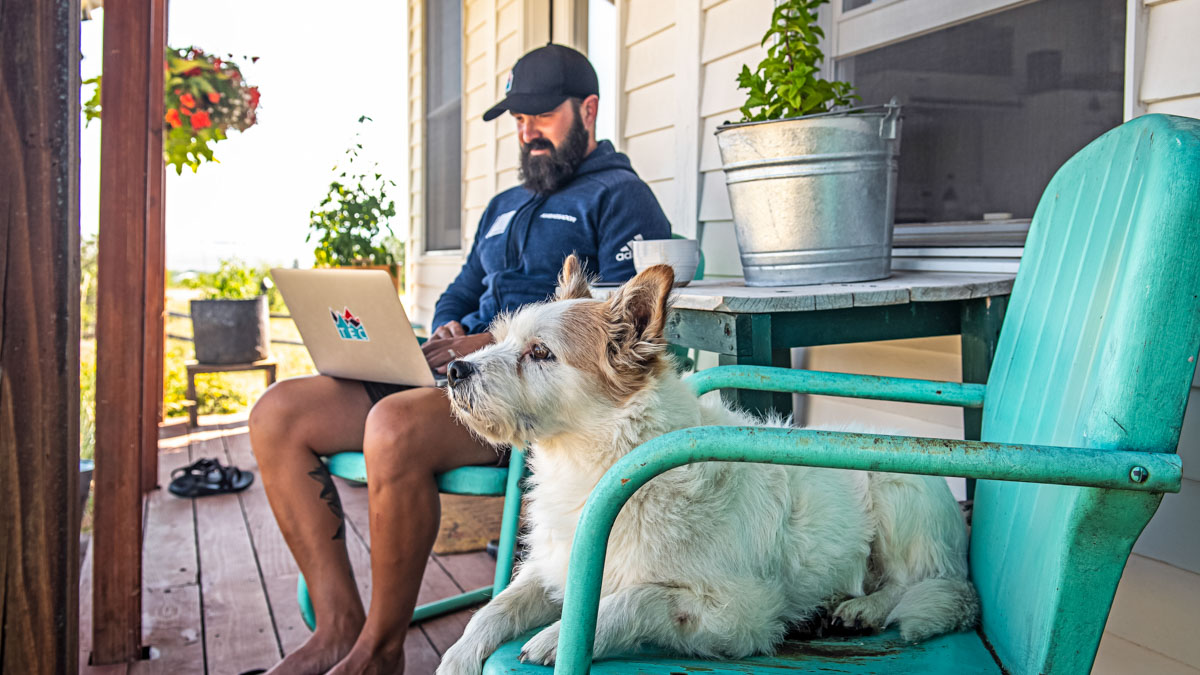OK, let’s just admit it: 2020 was a bust. But with vaccines on the way, your athletes will have high hopes for 2021 and will be looking for you to help make these a reality. While you might not be able to influence how the next stage in the pandemic plays out, you can take proactive steps to make sure your coaching business is positioned to start the New Year strong. Here are some ways to recharge and reload for 2021.
1. Embrace the Pivot
In a recent episode of Shark Tank, entrepreneur extraordinaire Robert Herjavec explained that when you’re a business owner who’s trying to thrive in the midst of COVID-19, “You can’t be a dinosaur.” Rather than throwing up your hands and admitting defeat, you need to double down on your strengths, bolster your weaknesses, and pivot your coaching practice as needed. In other words, it’s time to take a leaf out of the Marines’ playbook and improvise, adapt, and overcome in 2021.
One way to do so is to grow your client base through online coaching. A platform like TrainingPeaks allows you to deliver both templated and personalized training plans to existing and new clients alike. This way, no matter what shutdowns, quarantines, and stay-at-home orders might await you, you’ll have an additional revenue stream that can keep you going if you’re unable to meet with your athletes in person. Check out this recent article for some ideas on how to up your online coaching game.
Also, consider how you can adapt your in-person coaching to take continued COVID-19 restrictions into account. Beyond simply wearing a mask when you’re with your athletes, what spacing and hygiene steps can you take to ensure they stay safe? Rather than simply keeping tabs on whatever rules your city, state, and county has in place, seek advice from your fellow coaches to establish best practices that are adaptable as mandates change. This way, when a client books a face-to-face session, you’ll be able to give them peace of mind as well as first-class coaching.
2. Help Your Athletes Set Better Goals and Follow Through on Them
This past year, it was probably hard for you to keep your athletes driven when the races they’d be training for were either canceled or delayed with a TBD status indefinitely. While it’s still unclear how the 2021 event calendar will look, it’s up to you to fire up your clients and get them motivated to charge into the New Year at full speed. To begin, review their aims from this past year, assess whether these are still achievable, and help them make the necessary adjustments to get back on track.
Then assist them in identifying new goals for the next 12 months. You could start by suggesting a few targets to aim at based on their past performances and training history. From there, encourage them to set at least one ambitious dream goal (such as qualifying for their first Ironman), one output goal (like a new PR), and several milestone or stepping stone goals to check in on at quarterly intervals. Then you can work backward from these targets, tailor their training plans accordingly, and offer the accountability they’ll need to achieve their aims.
This can start with devoting a few minutes each week to checking in with every athlete on their progress. What seems to be working well and can be left as is, and what isn’t working and needs to change? Are there any tweaks the client feels you need to make to their programming? Be sure to not confine your conversation to training and competition-centric goals, but also to see how they’re doing with work, life, and relationship aims as well. This will show that you don’t merely care about them as an athlete, but also as a person.
3. Make Mindset a Priority
We’ve all been struggling to stay positive and proactive during the ups and downs caused by the coronavirus. A study from earlier this year found that 40 percent of US adults were struggling with a mental health issue, substance abuse, or both. While this is concerning, you can use it as an opportunity to pay extra attention to your athletes’ mental health going forward.
“If you notice an alteration in mood, change in personality, or emotional instability, that could be the sign that an athlete is struggling with a mental health challenge,” said Champion’s Mind creator Dr. Jim Afremow. “Verbally identifying the behavior and offering to help can go a long way, and if the issue seems more serious, you could refer them to a counselor or psychologist who you know and trust.”
It’s also important that you prioritize your own mental wellbeing, as you’ll only be able to lead others if you first take care of yourself. With this in mind, identify a new self-care practice to try like journaling, breathwork, or contrast therapy. Write down some ways that you can take your mind off work. And try establishing better boundaries that will give you a mindset break, like not checking emails after dinner.
To keep worries, fears, and anxieties at bay, Afremow suggests that you try setting aside a designated “worry period” for 10 to 15 minutes each day. When your mind starts to ruminate on negative thoughts, acknowledge what you’re thinking and feeling but remind yourself that you’re going to refocus on what you’re doing until your next worry period comes around. When it does, allow yourself to focus on both big and small issues, then write out steps you can use to tackle the most pressing ones that you can change, while also listing the uncontrollables and accepting that you can’t do anything about those.


